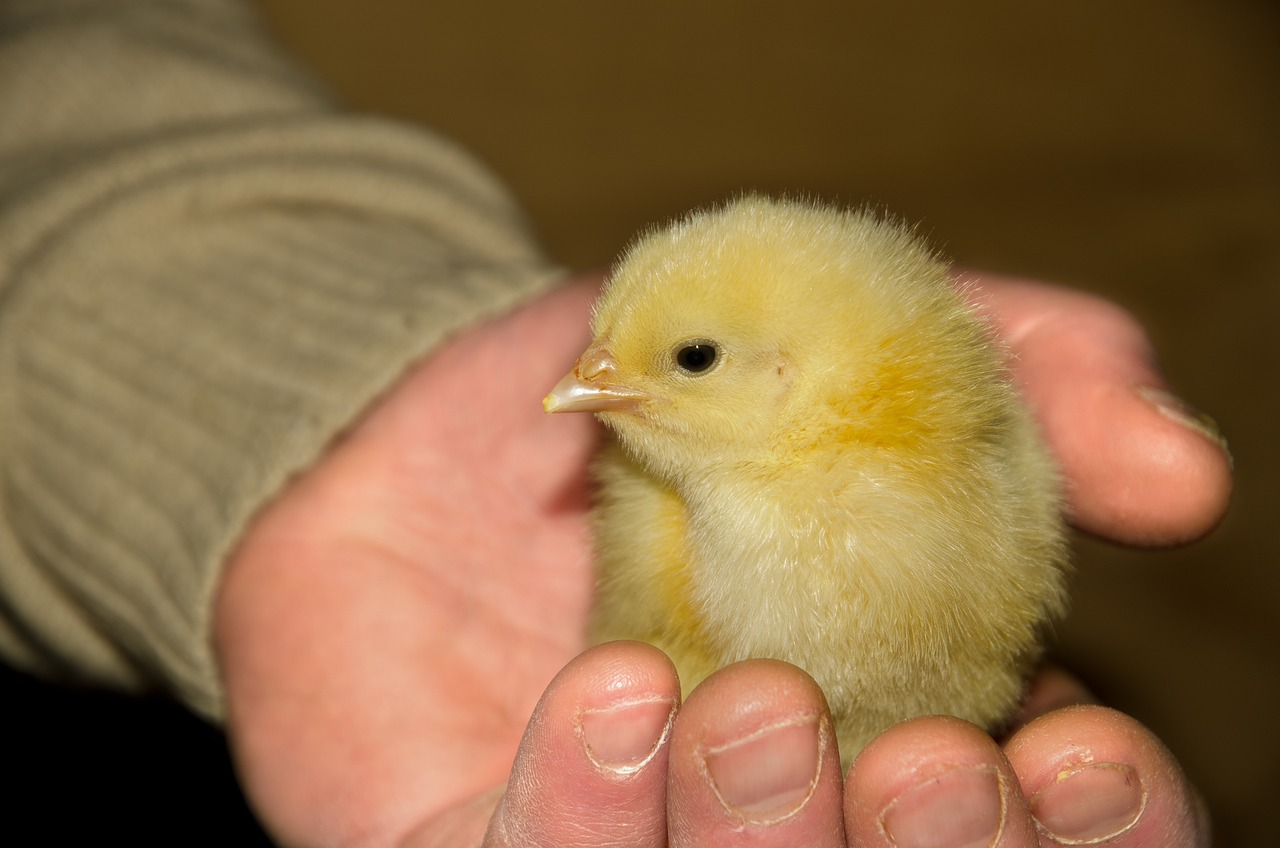How to Manage Flea and Tick Season Effectively
Flea and tick season can feel like a battleground for pet owners. These pesky parasites not only cause discomfort for our furry friends but can also pose serious health risks to both pets and humans. As the weather warms up, the emergence of fleas and ticks becomes inevitable, making it crucial to equip ourselves with the right strategies for effective management. In this article, we’ll explore essential tips and tricks to help you navigate through flea and tick season, ensuring the health and comfort of your beloved pets and your household.
Before diving into prevention and treatment, it’s important to understand what we’re up against. Fleas and ticks have distinct life cycles and behaviors that influence their infestations. Fleas, for instance, can leap up to 150 times their own body length, making them incredibly difficult to catch. They thrive in warm, humid environments and can reproduce rapidly, with a single female laying up to 50 eggs per day! Ticks, on the other hand, are more methodical. They wait patiently on grass or shrubs for a host to pass by, then attach themselves to feed on blood. Understanding their habitats and habits is crucial for effective management strategies.
When it comes to keeping your pets safe from fleas and ticks, prevention is key. There are various treatments available that can help shield your furry friends from these nuisances. Options include:
- Topical Solutions: These are applied directly to the skin and can provide long-lasting protection.
- Collars: Flea and tick collars release chemicals that repel or kill these pests.
- Oral Medications: These are ingested by pets and can provide systemic protection against infestations.
Choosing the right product depends on your pet’s age, weight, and health status. Always consult with your veterinarian to find the best solution tailored to your pet’s needs.
With so many options available, selecting the most suitable flea and tick products can be overwhelming. It’s essential to consider factors such as your pet’s age, weight, and any pre-existing health conditions. For instance, some treatments are not safe for young puppies or kittens. Additionally, consider your pet’s lifestyle; if they spend a lot of time outdoors, a more robust treatment may be necessary. Always read labels carefully and consult with your vet to ensure you’re making the best choice.
If you prefer a more holistic approach, there are several natural remedies that can complement traditional treatments. Essential oils like lavender, peppermint, and cedarwood are known for their repellent properties. However, it’s crucial to use them cautiously, as some oils can be toxic to pets. Always dilute oils and consult with a vet before use. Other natural options include:
- Regular baths with natural flea shampoos
- Using diatomaceous earth in your yard
- Employing flea-repelling plants like rosemary and mint
Routine grooming is not just about keeping your pet looking good; it’s also a vital part of flea and tick prevention. Regular brushing can help you spot any signs of infestation early on. Additionally, bathing your pet regularly can wash away any fleas or ticks that may have latched on. Make grooming a fun bonding experience with your pet, and it’ll be easier to keep them flea and tick-free.
As flea and tick populations surge during warmer months, taking specific precautions is essential. Limit your pet’s exposure to tall grasses and wooded areas where ticks are likely to lurk. When you return home from outdoor activities, check your pet for any signs of fleas or ticks. Consider using protective clothing for your pet during hikes or walks in high-risk areas. Being proactive during peak seasons can significantly reduce the chances of an infestation.
If you find that your home has become a breeding ground for fleas and ticks, don’t panic! There are effective home treatment options to eliminate these pests. Start with a thorough cleaning of your living environment.
One of the most effective ways to combat fleas and ticks in your home is through diligent cleaning. Regular vacuuming of carpets, rugs, and furniture can help remove flea eggs and larvae. Make sure to dispose of the vacuum bag or empty the canister outside immediately to prevent reinfestation. Additionally, washing pet bedding and any fabric your pet frequently comes into contact with in hot water can help kill any lingering pests.
If cleaning alone doesn’t do the trick, you may need to resort to insecticides. However, it’s essential to apply these products safely to protect your pets and family. Always read the labels carefully and follow the instructions. Consider using pet-safe insecticides, and ensure that your pets are kept away from treated areas until it’s safe for them to return.
Even after implementing preventive measures and treatments, ongoing monitoring is crucial. Regularly check your pets for signs of fleas or ticks, and keep an eye on your home environment as well. Follow-up treatments may be necessary to ensure that your efforts remain effective throughout the season.
Recognizing the signs of flea and tick infestations early can save you a lot of trouble. Common indicators include excessive scratching, biting, or licking by your pet, as well as the presence of flea dirt or ticks on their fur. In your home, look for small black specks (flea feces) or adult fleas. If you notice any of these signs, it’s time to take action!
Lastly, don’t underestimate the importance of regular veterinary visits. Your vet can provide valuable insights into the effectiveness of your flea and tick prevention strategies and adjust treatments as necessary. Keeping your pet healthy and protected is a team effort, and your vet is a crucial ally in this fight!
Q: How often should I treat my pet for fleas and ticks?
A: Treatment frequency can vary based on the product you choose. Some topical treatments are effective for a month, while others may last longer. Always follow the manufacturer's instructions and consult your veterinarian.
Q: Can fleas and ticks affect humans?
A: Yes, both fleas and ticks can bite humans, leading to discomfort and potential health issues. Ticks can transmit diseases like Lyme disease, while flea bites can cause allergic reactions in some individuals.
Q: Are natural remedies effective for flea and tick prevention?
A: Natural remedies can be effective, but they may not provide the same level of protection as traditional treatments. It’s best to use them in conjunction with other preventive measures.

Understanding Fleas and Ticks
Fleas and ticks are more than just pesky nuisances; they can pose serious health risks to both pets and humans. Understanding these tiny creatures' life cycles, behaviors, and preferred habitats is crucial for effective management and prevention strategies. Did you know that a single female flea can lay up to 50 eggs a day? That’s right! This means that if left unchecked, a small infestation can explode into a full-blown crisis in no time.
Fleas thrive in warm, humid environments, making your home an ideal breeding ground during those hot summer months. They tend to hide in places like carpets, upholstery, and even your pet's bedding. On the other hand, ticks are often found in wooded or grassy areas, waiting patiently for a host to latch onto. Once they find a suitable host, they can feast on blood for several days, increasing the risk of transmitting diseases like Lyme disease and Rocky Mountain spotted fever.
Both fleas and ticks undergo distinct life cycles that include eggs, larvae, pupae, and adults. Understanding these stages is key to breaking the cycle of infestation:
| Stage | Description | Duration |
|---|---|---|
| Egg | Flea eggs are tiny and white, often laid in clusters on the host or in the environment. | 1-10 days |
| Larva | Larvae are small, worm-like creatures that feed on organic debris, including flea feces. | 5-11 days |
| Pupa | Pupae are encased in cocoons and can remain dormant for several months, waiting for the right conditions. | 1 week to several months |
| Adult | Adult fleas emerge from their cocoons, ready to find a host and begin the cycle anew. | Several weeks to months |
Recognizing the signs of fleas and ticks is vital for early intervention. Fleas often leave behind small black specks (flea dirt) and cause pets to scratch excessively. Ticks can be harder to spot but look for small, round, dark spots on your pet's skin. Regular checks, especially after outdoor activities, can help you catch these pests before they become a bigger problem.
In summary, understanding the biology and behavior of fleas and ticks is your first line of defense in managing these unwelcome guests. By being proactive and informed, you can protect your pets and home from the discomfort and health risks associated with these parasites.

Preventive Measures for Pets
When it comes to keeping our furry friends safe during flea and tick season, prevention is key. These pesky parasites are not just a nuisance; they can lead to serious health issues for your pets. Therefore, it’s crucial to implement effective preventive measures that will protect them throughout the season. The good news is that there are numerous options available, ranging from topical treatments to collars and oral medications. Each method has its benefits, and understanding them can help you make the best choice for your pet.
Topical solutions, for instance, are a popular choice among pet owners. These treatments are applied directly to your pet’s skin, usually between the shoulder blades, where they can’t lick them off. They work by spreading over the skin and coat, killing fleas and ticks on contact. Many of these products offer protection for up to a month, making them a convenient option for busy pet owners. However, it’s important to choose a product that is specifically formulated for your pet’s species, size, and age to ensure safety and effectiveness.
Another effective preventive measure is the use of flea and tick collars. These collars release active ingredients that repel or kill fleas and ticks, providing continuous protection as long as they're worn. They can be particularly beneficial for pets that spend a lot of time outdoors. However, it’s essential to ensure that the collar fits properly and is comfortable for your pet. If your furry friend has a tendency to chew on their collar, it might be wise to consider alternative options.
Oral medications are also gaining popularity among pet owners. These pills are ingested by your pet and work systemically, meaning they circulate through your pet's bloodstream, killing fleas and ticks upon contact. They can be a great option for pets that are sensitive to topical treatments or collars. However, you should consult your veterinarian to determine the best oral medication for your pet's specific needs.
With so many products on the market, how do you choose the right one for your pet? First, consider your pet’s age, weight, and overall health. For example, puppies and kittens may require different formulations than adult pets. Additionally, pets with existing health conditions may need special consideration. Always consult with your veterinarian to ensure that you’re selecting a product that is safe and effective for your pet.
If you’re looking for a more holistic approach, there are several natural remedies that can complement traditional treatments. Essential oils, such as lavender and peppermint, have been known to repel fleas and ticks. However, it’s crucial to use these oils with caution, as some can be toxic to pets if not diluted properly. Always consult with a veterinarian before introducing any natural remedies into your pet’s routine.
Don’t underestimate the power of grooming! Regular brushing and bathing can help you keep an eye out for fleas and ticks while also reducing the chances of an infestation. Make grooming a fun bonding activity with your pet; it’s a great way to check for any signs of fleas or ticks while keeping their coat healthy and clean. Plus, if you find any pests early, you can take immediate action to address the problem before it escalates.
During peak flea and tick seasons, it’s crucial to ramp up your preventive measures. This might mean applying treatments more frequently or being extra vigilant about checking your pets after outdoor activities. If you live in an area where these parasites are particularly prevalent, consider keeping your pets indoors during peak times, such as early morning or late evening when fleas and ticks are most active.
In summary, managing flea and tick prevention for your pets involves a combination of effective products and regular care. By being proactive and informed, you can help ensure that your pets stay healthy and comfortable throughout the flea and tick season.
- How often should I apply flea and tick prevention products? It depends on the product you choose. Topical treatments are usually applied monthly, while collars can provide long-lasting protection for several months.
- Are natural remedies effective against fleas and ticks? Some natural remedies can be effective, but they may not provide the same level of protection as conventional treatments. Always consult your vet before using them.
- What should I do if I find fleas or ticks on my pet? If you discover fleas or ticks, act quickly! Use a flea comb to remove them, and consider applying a preventive treatment. Consult your veterinarian for the best course of action.
Choosing the Right Products
When it comes to protecting your beloved pets from the relentless assault of fleas and ticks, choosing the right products is crucial. With so many options available, it can feel overwhelming, almost like standing in front of a candy store with too many choices! But fear not; we’re here to simplify this process for you. First and foremost, it’s essential to consider your pet’s age, weight, and overall health status. Not all products are suitable for every pet, and using the wrong one can lead to ineffective treatment or even harm.
For instance, if you have a young puppy or kitten, you need to steer clear of certain potent chemicals that could be harmful to their developing systems. On the other hand, a senior pet may require a gentler approach due to potential health issues. Always check the product labels for age recommendations and weight guidelines, as these are your best friends in making an informed decision.
Next, let’s dive into the types of products available. You have topical treatments, collars, and oral medications. Each has its pros and cons:
| Product Type | Pros | Cons |
|---|---|---|
| Topical Treatments | Quick action, easy to apply | Can be messy, may require monthly application |
| Collars | Long-lasting, easy to use | May not be effective for heavy infestations |
| Oral Medications | Highly effective, systemic protection | Requires careful dosage, potential side effects |
It’s also worth considering the environment in which your pet lives. If they spend a lot of time outdoors, you might want to opt for a more robust solution, like oral medications or long-lasting collars. However, if your furry friend is more of a couch potato, topical treatments could suffice.
Moreover, don’t forget about the natural alternatives. Many pet owners are now leaning towards holistic approaches that utilize essential oils or herbal remedies. While these can be effective for some, it's vital to consult your veterinarian before introducing any new products, especially those that are not FDA-approved. Remember, just because something is 'natural' doesn't mean it's safe for all pets!
In conclusion, choosing the right flea and tick prevention products for your pet is not a one-size-fits-all situation. It requires a bit of research and a good understanding of your pet's unique needs. By taking the time to evaluate your options and consult with a vet, you’ll be well on your way to keeping your furry companions safe and comfortable during flea and tick season.
- What are the signs that my pet has fleas or ticks? Look for excessive scratching, biting at the skin, or visible fleas/ticks.
- Can I use human flea and tick products on my pet? No, human products can be harmful to pets. Always use pet-specific treatments.
- How often should I apply flea and tick prevention? Most topical treatments are applied monthly, but always follow the product instructions.
- Are natural remedies effective? They can be effective for some pets, but it's best to consult with a vet for recommendations.
Natural Alternatives
When it comes to managing flea and tick infestations, many pet owners are increasingly turning to as a way to protect their furry friends without the heavy use of chemicals. These remedies not only help in preventing infestations but also promote overall health and well-being. One popular method is the use of essential oils. Oils such as lavender, cedarwood, and lemongrass are known for their natural insect-repelling properties. However, it’s essential to use these oils cautiously, as some can be toxic to pets if used improperly.
Another effective natural approach involves the use of herbal flea powders. These powders can be made from a blend of natural ingredients like diatomaceous earth, which works by dehydrating fleas and ticks upon contact. When applying these powders, ensure that they are safe for your specific type of pet and that you follow the recommended guidelines for application. Additionally, incorporating apple cider vinegar into your pet’s diet can create an inhospitable environment for fleas and ticks, as these pests tend to dislike the acidity.
Beyond topical treatments and dietary changes, maintaining a clean living environment is crucial. Regularly washing your pet's bedding in hot water and vacuuming your home can significantly reduce the chances of an infestation. Furthermore, consider planting certain herbs in your garden, such as rosemary and mint, which can naturally deter fleas and ticks from invading your yard.
While these natural alternatives can be effective, it’s important to remember that they work best when combined with other preventive measures. Always consult with your veterinarian before introducing new treatments to ensure they are safe and suitable for your pet's unique needs. By taking a holistic approach, you can create a comprehensive flea and tick management plan that prioritizes your pet's health and comfort.
- Are natural alternatives effective against fleas and ticks? Yes, many natural remedies can be effective, especially when used in conjunction with other preventive measures.
- Can essential oils be harmful to pets? Some essential oils can be toxic to pets if not used correctly. Always consult with your veterinarian before use.
- How often should I apply natural treatments? The frequency of application can vary based on the product and your pet's lifestyle. Always follow the instructions provided.
- Is it necessary to combine natural treatments with other methods? Yes, combining different methods often yields the best results in preventing infestations.
Regular Grooming Practices
When it comes to managing flea and tick infestations, regular grooming is not just a luxury—it's a necessity. Think of grooming as a shield against these pesky invaders. Just like you wouldn’t walk into a storm without an umbrella, you shouldn’t let your pet roam about without a grooming routine. Regular grooming allows you to check for fleas and ticks before they become a major issue. It’s an opportunity to bond with your furry friend while keeping them healthy and comfortable.
During grooming sessions, you should pay close attention to specific areas where fleas and ticks love to hide, such as behind the ears, under the legs, and around the tail. Use a fine-toothed flea comb to meticulously search for any signs of these pests. If you find any, it’s crucial to act quickly. Fleas reproduce at an astonishing rate, and just a couple of them can lead to a full-blown infestation in no time!
In addition to combing, bathing your pet with a flea and tick shampoo can be an effective way to keep these pests at bay. However, remember that bathing frequency should be balanced; too many baths can strip your pet's coat of natural oils, leading to skin issues. Generally, a bath every month during flea and tick season is a good rule of thumb. This not only helps in removing any existing fleas but also makes it easier to spot any new ones that might have taken residence.
Moreover, grooming isn’t just beneficial for your pet; it’s also a chance to inspect their skin for any unusual changes. Look for redness, irritation, or bald spots that might indicate an allergic reaction or skin infection caused by flea bites. Keeping your pet clean and well-groomed is a proactive approach to ensuring their overall health and comfort.
To make the most out of your grooming sessions, consider the following tips:
- Establish a Routine: Set a regular schedule for grooming, ideally weekly, to keep a close eye on your pet’s condition.
- Use the Right Tools: Invest in quality grooming tools, including a flea comb, brushes, and specialized shampoos.
- Reward Your Pet: After each grooming session, give your pet a treat or extra playtime to create a positive association.
In conclusion, making grooming a regular practice not only helps in managing fleas and ticks but also promotes a healthy and happy pet. It’s a small investment of time that pays off in big ways, ensuring your furry friend remains free from these pesky parasites.
Q: How often should I groom my pet during flea and tick season?
A: It's best to groom your pet at least once a week during flea and tick season to catch any infestations early.
Q: Can grooming alone prevent fleas and ticks?
A: While grooming is a crucial part of prevention, it should be combined with other preventive measures like topical treatments or collars for maximum effectiveness.
Q: What should I do if I find fleas or ticks during grooming?
A: If you find fleas or ticks, it's important to treat your pet immediately with appropriate flea and tick treatments and consult your veterinarian for further advice.
Seasonal Precautions
As the temperatures begin to rise and the days grow longer, it’s crucial to recognize that flea and tick season is upon us. These pesky parasites thrive in warm weather, making it essential to take to protect your pets and home. The first step is to understand that flea and tick populations can explode in just a matter of weeks, so proactive measures are vital. Think of it like preparing for a storm; you wouldn’t wait until the rain starts to gather your supplies, right? Similarly, being ahead of the curve can save you a lot of headaches down the line.
One of the most effective strategies is to start preventive treatments early. Don’t wait until you see signs of fleas or ticks; instead, begin using preventive products at least a month before peak season. This is especially important in areas that experience a warmer climate, as fleas can reproduce rapidly. A good rule of thumb is to follow the three-month rule: continue treatments for three months after the last frost to ensure any lingering pests are eliminated.
Additionally, consider the environments where your pets spend the most time. Fleas and ticks love to hang out in tall grass, wooded areas, and even in your backyard. To minimize exposure, keep your lawn well-maintained by regularly mowing and trimming bushes. You might also want to create a designated play area for your pets that is free from tall grasses and debris. Just imagine your backyard as a safe haven, where your furry friends can frolic without the fear of unwanted hitchhikers!
Another critical precaution is to inspect your pets regularly. After outdoor adventures, take a moment to check your pets for any signs of fleas or ticks. Look for small black specks (flea dirt) or the actual ticks, which can appear as small bumps on their skin. If you find any, act quickly! Removing ticks promptly can significantly reduce the risk of disease transmission. You can also use a fine-toothed comb to help catch any fleas that might be hiding in their fur.
Moreover, it’s important to educate yourself about the specific types of fleas and ticks prevalent in your area. For instance, the black-legged tick (or deer tick) is notorious for spreading Lyme disease, while the common cat flea can cause significant discomfort to your pets. Understanding these pests can empower you to take the right steps to protect your loved ones. You might even consider creating a simple chart to track local flea and tick reports, which can help you stay informed and prepared.
Lastly, don’t forget about your home environment. Regularly wash your pet’s bedding and vacuum your house to eliminate any eggs or larvae that may have made their way indoors. Consider using a vacuum with a HEPA filter to ensure you’re capturing as many allergens and pests as possible. It’s like giving your home a fresh start every season!
Q: How often should I apply flea and tick prevention products?
A: It depends on the product, but most topical treatments should be applied monthly. Always follow the instructions provided by the manufacturer.
Q: Can I use flea and tick prevention products on puppies or kittens?
A: Yes, but it’s essential to choose products specifically formulated for young animals. Always consult your veterinarian for the best options.
Q: What should I do if I find a tick on my pet?
A: Remove the tick as soon as possible using fine-tipped tweezers. Grasp the tick as close to the skin’s surface as you can and pull upward with steady, even pressure. Clean the area afterward and monitor your pet for any signs of illness.
Q: Are natural flea and tick prevention methods effective?
A: Some natural remedies can help repel fleas and ticks, but they may not be as effective as traditional treatments. It’s best to consult your veterinarian for advice tailored to your pet’s needs.

Home Treatments for Infestations
Dealing with a flea or tick infestation in your home can feel like a never-ending battle, but don’t throw in the towel just yet! With the right approach, you can reclaim your space and ensure your pets are safe and comfortable. The first step in this process is to identify the problem quickly and efficiently. Once you’ve confirmed that these pesky critters have invaded your home, it’s time to roll up your sleeves and get to work.
One of the most effective home treatments is thorough cleaning. This means vacuuming your carpets, rugs, and upholstery regularly. Fleas and ticks love to hide in these cozy spots, so make sure to use a vacuum with a strong suction. After vacuuming, don't just leave the bag lying around—dispose of it immediately to prevent any potential re-infestation. If you have a bagless vacuum, empty the canister outside and wash it out with soap and water to eliminate any lingering eggs or larvae.
In addition to vacuuming, washing your pet’s bedding, your own bedding, and any throw blankets in hot water is crucial. This not only kills fleas and ticks but also removes any eggs that may be lurking in the fabric. Aim for a wash cycle of at least 130°F (54°C) to ensure effectiveness. For items that can’t be washed, consider placing them in the dryer on high heat for about 30 minutes, which can kill any pests hiding within.
Sometimes, cleaning alone isn’t enough. If you find that the infestation persists, you may want to consider using insecticides. However, it's essential to approach this step with caution. There are many products available, but not all are safe for pets or children. Look for insecticides that specifically target fleas and ticks and are labeled as pet-safe. Always read the instructions carefully and follow them to the letter. Here’s a quick comparison table of common insecticides:
| Product Name | Type | Safety for Pets | Application Method |
|---|---|---|---|
| Advantage II | Topical | Safe | Applied directly to skin |
| Frontline Plus | Topical | Safe | Applied directly to skin |
| PetArmor | Topical | Safe | Applied directly to skin |
| Raid Flea Killer | Aerosol | Not safe | Sprayed in infested areas |
After applying insecticides, it’s important to keep your pets away from treated areas until the product has dried completely. This ensures their safety while effectively eliminating the infestation. Additionally, consider using a flea trap, which can attract and capture fleas. These traps are typically sticky and can be placed in areas where your pets frequent.
Lastly, don't forget about prevention! Once you’ve managed to eradicate the infestation, it’s crucial to maintain a regular cleaning schedule and keep an eye out for any signs of fleas or ticks returning. Regular grooming of your pets can also help catch any hitchhikers before they become a more significant problem. Remember, a proactive approach is your best defense against these troublesome pests!
Q: How long do fleas and ticks live?
A: Fleas can live for several weeks to a few months, while ticks can survive for several months to a couple of years, depending on their life stage and environmental conditions.
Q: Can fleas and ticks come back after treatment?
A: Yes, if not all eggs and larvae are eliminated during treatment, they can hatch and lead to a new infestation. Regular cleaning and preventive measures are essential to avoid this.
Q: Are there any natural treatments for fleas and ticks?
A: Yes! Some natural remedies include diatomaceous earth, essential oils like lavender or cedar, and regular grooming with flea combs. However, always consult with a vet before using any natural products on pets.
Cleaning and Vacuuming Techniques
When it comes to tackling flea and tick infestations, effective cleaning and vacuuming techniques are your first line of defense. These pesky critters can hide in the most unexpected places, so a thorough cleaning routine is essential. Start by focusing on high-traffic areas where your pets spend most of their time, such as living rooms, bedrooms, and even your car. Fleas can jump up to 8 inches high, so be sure to vacuum not just the floors but also furniture, carpets, and rugs.
One effective strategy is to use a vacuum cleaner equipped with a HEPA filter. These filters can trap tiny particles, including flea eggs and larvae, ensuring they don’t escape back into your home. After vacuuming, it’s crucial to empty the vacuum bag or canister immediately to prevent any surviving fleas from re-infesting your space. Seal the bag in a plastic bag and dispose of it outside your home to eliminate any chance of escape.
Additionally, it’s beneficial to incorporate steam cleaning into your cleaning regimen. Steam cleaning not only removes dirt but also uses heat to kill fleas and their eggs on contact. Consider using a steam cleaner on carpets and upholstery every couple of weeks during peak flea and tick season. This method is not only effective but also a chemical-free way to keep your environment safe for both pets and family members.
Don’t forget about your pet’s bedding and toys! Wash these items in hot water weekly, as fleas love to hide in soft fabrics. If washing isn’t an option, consider placing them in the dryer on high heat for at least 30 minutes. This will help to kill any lingering fleas and their eggs.
Here’s a quick overview of cleaning techniques to keep in mind:
- Vacuum regularly: Aim for at least twice a week during flea season.
- Use a HEPA filter: This traps smaller particles effectively.
- Steam clean: Utilize steam on carpets and upholstery to kill fleas.
- Wash pet bedding: Use hot water to eliminate any flea presence.
- Dry on high heat: For items that can’t be washed, this is a great alternative.
By integrating these cleaning and vacuuming techniques, you’ll not only reduce the chances of a flea and tick infestation but also create a healthier environment for your pets and family. Remember, consistency is key! Regular cleaning can significantly diminish the flea population in your home and make your battle against these pests much more manageable.
Q: How often should I vacuum to prevent fleas?
A: It’s recommended to vacuum at least twice a week during peak flea season to effectively reduce their population.
Q: Is steam cleaning effective against fleas?
A: Yes! Steam cleaning is an excellent method as it uses high temperatures to kill fleas and their eggs on contact.
Q: Can I use regular cleaning products to eliminate fleas?
A: While regular cleaning products can help, it’s important to use flea-specific treatments and cleaning methods for the best results.
Q: How can I protect my pet's bedding from fleas?
A: Wash your pet's bedding weekly in hot water and consider using the dryer on high heat to kill any fleas or eggs.
Using Insecticides Safely
When it comes to managing flea and tick infestations, using insecticides can be an effective measure. However, safety should always be your top priority, especially when you have pets and children in the home. The key to using insecticides safely lies in understanding the products you're using, following the instructions carefully, and taking necessary precautions to minimize risks.
First and foremost, always read the label on the insecticide product. This label contains crucial information regarding the application method, safety precautions, and any specific guidelines for use around pets and children. For instance, some insecticides require you to keep pets and people away from treated areas for a certain period. Ignoring these instructions can lead to harmful exposure, so it’s essential to adhere to them strictly.
Next, consider the type of insecticide you are using. There are various forms available, including sprays, powders, and foggers. Each has its own set of application methods and safety considerations. For example, if you choose a spray, it’s important to ensure good ventilation in the area you’re treating. Open windows and turn on fans to disperse any lingering chemicals. On the other hand, if you opt for a fogger, vacate the area and keep pets and children out until it’s safe to return.
Another critical factor is timing. Apply insecticides during times when your pets are least likely to be in the treated areas. This could mean treating your home while you're out for the day or during the evening when pets are typically resting. Additionally, consider the weather conditions; avoid applying insecticides on windy days to prevent drifting onto unintended areas.
It’s also wise to explore eco-friendly options. Many manufacturers now offer insecticides that are less harmful to the environment and safer for your family. These products often utilize natural ingredients that can effectively tackle flea and tick problems without the harsh chemicals found in traditional insecticides. Always look for products that are labeled as safe for use around pets and children.
To further ensure safety, you can create a checklist before applying any insecticide:
- Read and understand the product label.
- Clear the area of pets and children.
- Wear protective gear, such as gloves and a mask, if recommended.
- Ventilate the area during and after application.
- Monitor the area for any adverse reactions in pets or family members.
Finally, remember that using insecticides is just one part of a comprehensive flea and tick management strategy. Regular cleaning, vacuuming, and pet grooming should accompany any chemical treatments to effectively eliminate these pests from your home and keep them from returning.
1. Are insecticides safe to use around pets?
Most insecticides are safe when used as directed, but it's crucial to read the label and follow all safety precautions. Some products may require pets to be kept away from treated areas for a specific time.
2. How long should I keep my pets away from treated areas?
The duration can vary depending on the product. Always refer to the label for specific instructions, but a common recommendation is to keep pets away for at least 24 hours.
3. What are some natural alternatives to chemical insecticides?
Natural alternatives include diatomaceous earth, essential oils (like lavender or cedar), and homemade sprays using vinegar and water. These can be effective but may require more frequent application.
4. Can I apply insecticides indoors and outdoors?
Yes, many insecticides are designed for both indoor and outdoor use. However, make sure to choose the right product for each environment and follow the application instructions carefully.

Monitoring and Follow-Up
When it comes to managing flea and tick season effectively, are crucial components that can make all the difference in keeping your pets and home free from these pesky parasites. Just like a gardener who regularly checks their plants for signs of pests, pet owners must stay vigilant and proactive. This means not only observing your pets for any signs of infestation but also implementing a routine that ensures ongoing protection. Have you ever wondered how often you should check your furry friends? Regular checks can help you catch any issues before they become a full-blown infestation.
Recognizing the signs of infestation is the first step in this monitoring process. Fleas and ticks can be sneaky, hiding in the fur of your pets or lurking in the corners of your home. Look out for behaviors such as excessive scratching, biting, or licking of the skin. You might also notice small black specks (flea dirt) or even the ticks themselves, which can appear as small, dark bumps. If your pet seems more restless than usual or is losing hair, these could also be indicators that something is amiss. Remember, the sooner you act, the easier it will be to resolve the issue!
Additionally, regular vet check-ups play an essential role in monitoring your pet's health. During these visits, your veterinarian can assess the effectiveness of your flea and tick prevention strategies. They can suggest adjustments to your current regimen based on your pet's lifestyle, age, and health status. Think of your vet as your partner in this battle against fleas and ticks. They have the expertise to guide you in making informed decisions that will keep your pets safe and comfortable.
To make the most of your monitoring efforts, consider setting a schedule for follow-up treatments. This can include reapplying topical treatments, giving oral medications, or even using natural remedies. A simple calendar reminder can ensure that you don’t miss a dose. Here’s a quick table to help you visualize a potential follow-up schedule:
| Treatment Type | Frequency | Notes |
|---|---|---|
| Topical Solutions | Monthly | Apply on the same date each month for consistency. |
| Oral Medications | Monthly | Ensure to follow the vet's prescription. |
| Natural Remedies | Weekly | Reapply as needed, especially after baths. |
In conclusion, the key to successfully managing flea and tick infestations lies in consistent monitoring and timely follow-ups. By staying alert and engaged with your pet’s health, you can create a protective barrier against these unwanted guests. Remember, prevention is always better than cure. So, keep an eye out for those signs, schedule those vet visits, and maintain a routine that works for you and your furry companion!
- How often should I check my pet for fleas and ticks? It's best to check your pet at least once a week, especially during peak flea and tick seasons.
- What are the signs of flea and tick infestation? Look for excessive scratching, biting, flea dirt, and visible ticks on your pet's skin.
- How can I ensure my flea and tick prevention is effective? Regular vet check-ups and adherence to a treatment schedule are key to maintaining effective prevention.
- Are there natural alternatives to chemical treatments? Yes, options like essential oils and natural sprays can be used, but consult your vet for safe choices.
Signs of Infestation
Recognizing the signs of flea and tick infestations early on can save you and your pets from a world of discomfort. These pesky parasites are not only annoying but can also pose serious health risks to your furry friends. So, what should you be on the lookout for? Let’s dive into the most common indicators that your home or pet might be under siege.
First and foremost, keep an eye out for excessive scratching or biting. If your pet is constantly pawing at their skin or seems unusually restless, it could be a telltale sign of fleas or ticks. Fleas tend to cause intense itching, leading to red, inflamed skin, while ticks can cause localized irritation. In severe cases, you might even notice hair loss or skin infections as your pet tries to relieve the discomfort.
Another sign to watch for is the presence of flea dirt. This is essentially flea feces, which looks like tiny black specks. If you notice these little dots on your pet’s fur or in their bedding, it’s a sure sign that fleas are around. To confirm, you can take a damp paper towel and rub the specks; if it turns red, you’ve got flea dirt on your hands!
Ticks, on the other hand, can be a bit trickier to spot. They often attach themselves to the skin, and their presence can be hidden under fur. Regularly checking your pet’s ears, between toes, and under the collar can help you catch them early. If you find a tick, it’s crucial to remove it properly to avoid any potential disease transmission.
Moreover, keep an eye on your home environment. If you notice your pets are behaving oddly, such as hiding or being less active than usual, it might be time to inspect your living space. Fleas can jump onto carpets, furniture, and even your bedding. A sudden increase in flea activity could lead to an infestation, so it’s wise to be proactive.
To summarize, here are the key signs of flea and tick infestations to monitor:
- Excessive scratching or biting by your pets
- Presence of flea dirt on fur or bedding
- Visible ticks on your pet’s skin
- Unusual behavior in pets, such as hiding or lethargy
By staying vigilant and recognizing these signs early, you can take swift action to manage infestations before they escalate. Remember, a little attention can go a long way in ensuring the health and happiness of your beloved pets.
Q: How can I tell if my pet has fleas or ticks?
A: Look for signs such as excessive scratching, biting, flea dirt, or visible ticks. Regular grooming and inspections can help you identify these issues early.
Q: What should I do if I find a tick on my pet?
A: Use fine-tipped tweezers to grasp the tick as close to the skin's surface as possible. Pull upward with steady, even pressure. After removal, clean the bite area and your hands.
Q: Can fleas and ticks affect my home?
A: Yes, fleas and ticks can infest your living environment. They can jump onto carpets, furniture, and even your bedding, so regular cleaning is essential.
Q: What preventive measures can I take to protect my pets?
A: Consider using topical treatments, collars, or oral medications specifically designed for flea and tick prevention. Regular grooming and cleaning your home can also help.
Regular Vet Check-ups
When it comes to keeping our furry friends healthy, are absolutely essential. Think of your pet's health like a car; just as you wouldn't drive your vehicle without regular maintenance, your pet deserves the same level of care. Routine visits to the veterinarian can help identify potential health issues before they escalate into something more serious. With flea and tick season in full swing, these check-ups become even more crucial.
During these visits, your vet will not only conduct a thorough examination but also discuss the appropriate flea and tick prevention strategies tailored to your pet's specific needs. They will assess factors such as your pet's age, weight, and overall health to recommend the best preventive measures. This personalized approach ensures that your pet receives the most effective protection against these pesky parasites.
Another important aspect of regular vet visits is the opportunity for ongoing monitoring. Fleas and ticks can be sneaky, often hiding in places we can't see. Frequent check-ups allow your veterinarian to assess your pet for any signs of infestation, ensuring that if fleas or ticks do make an appearance, they can be dealt with promptly. This proactive approach not only keeps your pet comfortable but also helps to prevent infestations in your home.
Moreover, your vet can provide valuable insights into seasonal trends regarding flea and tick activity in your area. For instance, they may inform you about peak seasons when these pests are most active, allowing you to take additional precautions during those times. Knowledge is power, and being aware of when to be extra vigilant can make a huge difference.
In addition to examining your pet for fleas and ticks, your veterinarian may also recommend blood tests or other diagnostics to check for any diseases transmitted by these parasites. Conditions like Lyme disease or flea allergy dermatitis can have long-lasting effects on your pet's health if not detected early. By staying on top of your pet's health with regular vet visits, you can catch these issues early and ensure your pet lives a happy, healthy life.
Lastly, don’t underestimate the importance of establishing a good relationship with your veterinarian. This bond can lead to better communication about your pet's needs and any concerns you may have. Remember, your vet is your partner in ensuring your pet’s health and well-being. So, make it a priority to schedule those check-ups and keep the lines of communication open!
- How often should I take my pet to the vet for check-ups? It's generally recommended to visit the vet at least once a year, but older pets or those with health issues may need more frequent visits.
- What should I expect during a vet check-up? Expect a full physical examination, discussion of your pet's diet and behavior, and recommendations for preventive care, including flea and tick treatments.
- Can I prevent fleas and ticks without going to the vet? While there are over-the-counter treatments available, it's best to consult with your vet for the most effective and safe options for your pet.
- What are the signs that my pet might have fleas or ticks? Look for excessive scratching, biting at the skin, or visible fleas/ticks on your pet's fur. If you suspect an infestation, consult your vet immediately.
Frequently Asked Questions
- What are the signs of a flea or tick infestation on my pet?
Some common signs include excessive scratching, biting at the skin, hair loss, and red or irritated skin. You might also notice tiny black specks (flea dirt) or actual fleas in your pet's fur. If you see your pet constantly uncomfortable, it’s a good idea to check for these pesky critters!
- How can I prevent fleas and ticks on my pets?
Prevention is key! You can use topical treatments, flea collars, or oral medications designed specifically for your pet. Regular grooming and bathing can also help detect and remove these pests before they become a problem. Think of it as a regular health check-up for your furry friend!
- Are natural remedies effective against fleas and ticks?
Absolutely! Natural alternatives like diatomaceous earth, essential oils (like lavender or cedar), and apple cider vinegar can be effective in repelling fleas and ticks. However, it’s important to consult with your vet before trying any new treatments to ensure they are safe for your pet.
- How often should I check my pet for fleas and ticks?
During peak flea and tick season, it’s best to check your pet at least once a week. Regular grooming sessions can help you spot any unwanted guests early! Think of it as a fun bonding time with your pet while keeping them safe.
- What should I do if I find fleas or ticks in my home?
If you discover fleas or ticks in your home, start by vacuuming thoroughly and washing your pet’s bedding in hot water. You may also want to consider using insecticides designed for indoor use, but always follow the safety instructions to protect your family and pets.
- How can I safely use insecticides in my home?
When using insecticides, always read the label carefully and follow the instructions. Ensure that pets and children are kept away from treated areas until it’s safe to return. Ventilation is also key—open windows and doors to let fresh air circulate while you treat your home.
- How often should I take my pet to the vet for flea and tick prevention?
Regular vet check-ups are essential, especially during flea and tick season. Your vet can assess your pet’s health and recommend the best prevention methods tailored to their needs. Aim for at least once a year, but more frequent visits might be necessary if your pet is at high risk.



















